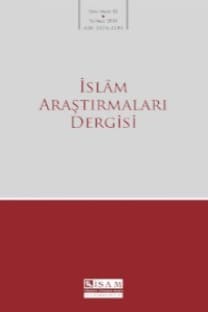Tasavvufun “Tutarlılık” Arayışında Bir Yorum Çerçevesi Olarak Vahdet-i Vücûd: Yûnus Emre’de Vahdet-i Vücûd Anlayışının Yansıması Hakkında Bir Değerlendirme
Wahdat al-Wujud as a Framework for an Interpretation in the Search for “Consistency” in Sufism: An Evaluation on the Reflection of the Concept of Wahdat al-Wujud in Yunus Emre
Wahdat al-Wujud as a Framework for an Interpretation in the Search for “Consis- tency” in Sufism: An Evaluation on the Reflection of the Concept of Wahdat al-Wu- jud in Yunus Emre One of the effective arts of expression utilized by Sufis when expressing their ideas that contain the joy of ecstasy was the art of poetry. However, some problems that emerged in Sufi thought have resulted from this widespread use of poetry. Sufi texts, which are interwoven with, stories, symbolic descriptions, metaphors and shathiyya spiritual boast , can act as obstacles that stand in the way of “non-Sufi” people when trying to attain an objective and comprehensible understanding of Sufism. The Sufis wanted to develop a unique language in order to hide their special sirrý knowledge from the criticisms of fuqaha and mutakallimun, thus making it available only to other Sufis; however, this situation led to the appearance of a closed language that was difficult even for the Sufis to understand. With Ibn Arabý and his followers Sufism underwent a new process; the aim now was that this literature would attain an objective expression that could be understood not only by the Sufis, but also by non-Sufis. In this context the thoughts that were expressed about wahdat al-wujud became a reference frame to be used to explain all Sufi subjects, the texts which appeared over different periods were all accepted as ones supporting and wahdat al-wujud that all Sufis were in agreement, down to the very details, on this matter was strongly emphasized. In this article the criteria that make a writer a supporter of wahdat al-wujud are defined and these criteria are applied to the poems of Yunus Emre
Keywords:
Tasawwuf, wahdat al-wujud, Ibn Arabý, Qonawý Yunus Emre,
- ISSN: 1301-3289
- Yayın Aralığı: Yılda 2 Sayı
- Başlangıç: 1997
- Yayıncı: TDV İslâm Araştırmaları Merkezi
